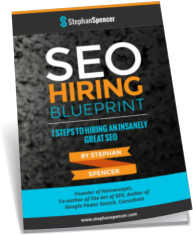Way back in 2016 (it seems so long ago!), Brian Dean, noted authority on SEO and founder of Backlinko, coined the term “guestographics” to describe a link building strategy he described as part guest post, part infographic.
In this post on Backlinko.com, Brian outlined the guestographics method for gaining backlinks.
The strategy is relatively straightforward:
- Post an infographic on your site
- Find sites that write about the topic of your infographic
- Show them your infographic
- Offer them unique content (e.g. a blog post to contextualize the infographic)
- Get your backlinks
As you can see, the really clever part of Brian’s strategy here is not the infographic itself, but the “bribe” of unique content for a blog post alongside the infographic.
The key here (as with most link building) is crafting a compelling outreach email and offering content that adds value to the target site.
It’s a proven link building strategy and Brian himself reveals in the post that he has achieved massive success with it.
But is it time to update the concept for 2019? Is there a way to make the offer even more link worthy?
Perhaps, and we can start by turning the guestographics concept on its head.
An Update on the Guestographic
Instead of deconstructing Brian’s strategy, which is good link building practice (although I would advise a slightly different approach to the outreach), let’s take a look at ways we can make the infographic itself more noteworthy.
To do this, we need to slightly change the definition of “guestographic.” Instead of an infographic that gets you a guest post, what if you created another value-add by asking notable people to guest on your infographic?
Traditionally, infographics are created by sourcing interesting facts and data from studies, writing up some content, and hiring a designer to finish it off (or designing it yourself on a site like visual.ly).
With this approach, you generally wind up with an infographic that looks and feels pretty similar to most infographics out there.
Instead, using collaboration to attract big names or experts to be a part of your infographic can result in something remarkable. Notable people also make outreach easier as familiar names open doors.
Here are a few ideas to 10x your infographics:
1. Collaborate on Original Research
While it’s quick and easy to source your data from a study that’s already been published, that data is also available to everyone else. You might present it in a more digestible format, but for the most part, infographics using unoriginal research are not going to be newsworthy.
Collaborating with a respected expert or market research company can have two benefits: first, your collaborators will be encouraged to share the infographic with their followers (and hopefully provide a link to your site); and second, if your study uncovers an original fact or data point, you may get interest from journalists and coverage in the mainstream media on top of the usual links and shares.
2. Source Original Quotes From Notable People
Another way to make your infographic highly shareable (even newsworthy) is to include original quotes from experts or notable people in your niche.
Note that several studies have found that “strong opinions” attract more links. If you can include a quote that is surprising or even polarizing, this will increase your chances of getting attention. (Note: try to avoid offensive statements or content that might damage your brand.)
3. Ask an Influencer or Celebrity Copywriter to Create the Content
What if you hired Jerry Seinfeld or Tina Fey to write the copy for your infographic? Okay, that might be a little pricey, but you get the idea…
Is there a unique or notable person in your niche that would add value to the piece, e.g. make it more entertaining, funnier, or just make people pay attention to it? What about an up-and-coming comedian or influencer looking for exposure? If you can attach high-profile name to the infographic it will help you stick out in a crowded field.
4. Hire a Rock Star Designer
Did you know that some designers have huge followings online? For example, Jessica Walsh of Sagmeister and Walsh has over 400,000 followers on Instagram, while Steven Harrington has 176,000.
The names I mentioned are top-tier designers, but there are plenty of smaller names that still have a respectable following. It might be more expensive than going with no-name agency, but having a celebrity designer create your infographic could be enough to make it noteworthy, especially if they bring something unique and edgy to the collaboration.
When you are looking for a designer, check their social media pages to see what kind of following they have. Look for artists with a unique style that will make your infographics pop and stand out from the crowd. Also check whether they upload their work to graphic design portfolio sites like Dribbble or Carbonmade, as this can also increase the visibility of the final product.
A collaboration like this is more work and potentially more expensive than the usual method of creating an infographic. While you might come up with an infographic idea good enough to go viral on its own, there’s no harm in adding a little extra firepower if you can.
Think about it: would you rather spend thousands on a couple of samey infographics that get a few links, or invest in one extraordinary infographic that gets your brand in front of hundreds of thousands, or even millions of people?
The choice is yours.
For more great tips on design, check out my interview with Joana Galvao on the Marketing Speak podcast.


 SIGN UP FOR EXCLUSIVE WEEKLY CONTENT
SIGN UP FOR EXCLUSIVE WEEKLY CONTENT 


Hey Stephan:
Awesome post and your ideas are useful.
I own a blog and I have recd. multiple requests to include guestographics in my blog posts.
But the problem is, almost all of them where my direct competitors. Not sure how much success these guys had.
Perhaps, we should target related fields or at least blogs who are not competitors.
Best
Tom